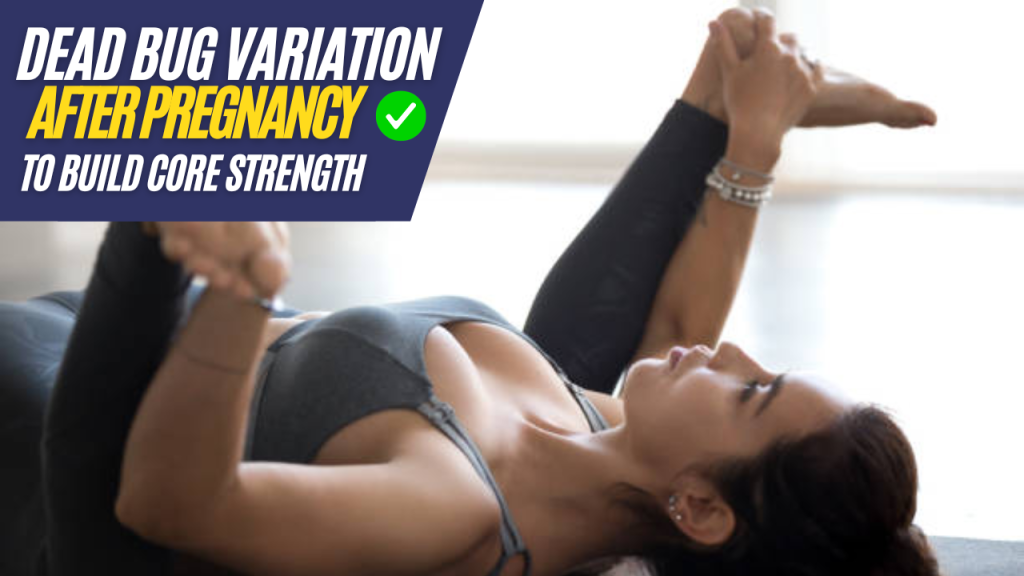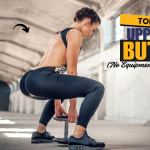“Rebuilding your core after pregnancy isn’t just about flattening your belly—it’s about healing from the inside out.”
If you’re a new mom eager to reclaim your core strength but worried about jumping into traditional ab exercises, you’re not alone. Many women are surprised to learn that crunches and planks can sometimes do more harm than good post-pregnancy—especially if you’re dealing with diastasis recti, weakened pelvic floor muscles, or general postpartum fatigue.
Enter: the Dead Bug exercise—and more specifically, a smart variation of it that’s gentle yet powerfully effective for rebuilding deep core strength.

What Can Happen After 30 Days of Doing the Wall Press Dead Bug
| Benefit | Description |
|---|---|
| Improved Core Activation | Better engagement of the deep core muscles, including the transverse abdominis. |
| Enhanced Breath Awareness | Stronger connection between breathing, diaphragm, and pelvic floor. |
| Better Posture | More spinal stability and awareness throughout daily movements. |
| Reduced Lower Back Discomfort | Core support helps relieve pressure on the lumbar spine. |
| Strengthened Pelvic Floor | Coordinated breath and movement support pelvic floor recovery. |
| Mind-Muscle Connection | Greater control and awareness during exercise and everyday actions. |
| Safer Movement in Daily Life | Improved stability while lifting, bending, or carrying your baby. |
| Tighter Abdominal Wall (Functionally) | The abdominal area may begin to feel and appear more toned as function returns. |
| Increased Confidence | A sense of strength and progress in your postpartum healing journey. |
Dead Bug Exercise Variation: Do’s & Don’ts for Postpartum Core Recovery
| Do | Don’t |
|---|---|
| Press your hands firmly into the wall to activate your core | Let your lower back arch off the ground |
| Engage your pelvic floor with each exhale | Hold your breath during the movement |
| Move slowly and with control | Rush through the reps |
| Focus on keeping your core and spine stable | Let your ribs flare or your belly bulge |
| Keep your neck and shoulders relaxed | Tense your neck or strain your upper body |
| Watch for signs of proper alignment and activation | Ignore signs like coning, pain, or pressure in your abdomen |
| Incorporate diaphragmatic breathing with each rep | Use shallow chest breathing |
| Stop and modify if anything feels off | Push through discomfort just to finish the set |
| Get clearance from a doctor or pelvic floor therapist before starting | Start too early without postpartum approval |
Why Your Core Changes After Pregnancy
During pregnancy, your body goes through incredible transformations. One of the most significant is the stretching of the abdominal muscles, especially the rectus abdominis (aka the “six-pack” muscle), which can separate—a condition known as diastasis recti.
Additionally, hormonal changes, altered posture, and carrying the weight of your baby impact your core stability and pelvic alignment. After birth, the focus should be on restoring function, not just looks.
Common Myth:
“Doing crunches will fix my postpartum belly.”
Truth: Crunches can worsen diastasis recti if done too soon or incorrectly. Strength must come from the deep core (transverse abdominis and pelvic floor), not just surface muscles.
What Makes the Dead Bug Exercise So Powerful?
The Dead Bug exercise is a safe, supine movement that trains your body to engage the core while moving the limbs. This mirrors daily activities like lifting your baby, getting out of bed, or carrying groceries—making it incredibly functional for postpartum recovery.
It emphasizes:
- Spinal stability
- Core control
- Breath coordination
- Pelvic floor awareness
But not all Dead Bug exercises are created equal. Let’s explore a variation tailored for postpartum healing.
Dead Bug Exercise Variation: Wall Press Dead Bug with Breath Control
This variation enhances the traditional Dead Bug by incorporating breathwork and isometric resistance to deepen core activation without overloading your abdominal wall.

How to Do It:
Starting Position:
- Lie on your back with your hips and knees at 90 degrees (tabletop position).
- Place your hands on a wall behind you, arms extended.
- Flatten your lower back gently into the floor (neutral spine).
- Engage your pelvic floor and transverse abdominis (deep core muscles).
- Inhale through the nose, expanding the rib cage.
Movement:
- As you exhale, gently press your hands into the wall to create resistance.
- Slowly lower one heel to tap the floor while keeping the other leg steady.
- Keep pressing into the wall and avoid letting your back arch.
- Return the leg to start. Inhale.
- Repeat on the other leg.
Do 8–10 reps per side, 2–3 sets.
Why This Variation Works Postpartum
- Wall pressing engages your serratus anterior, helping stabilize your rib cage and thoracic spine.
- Single-leg movement avoids overloading your abdominals while still challenging coordination.
- Breath-focused reps train your diaphragm, pelvic floor, and core to work together again—crucial for healing and long-term strength.
Do You Know?
Your diaphragm and pelvic floor move in sync.
When you breathe deeply, your diaphragm descends, and so does your pelvic floor. Syncing breath with core exercises retrains this vital connection, often disrupted during pregnancy.
Bonus Tips to Make the Dead Bug Variation More Effective:
- Use a Pilates ball between your hands and the wall for added feedback and engagement.
- Slow it down. Speed isn’t the goal—control is.
- Focus on the exhale. This is when core engagement peaks.
- Listen to your body. Any bulging, coning, or discomfort is a sign to pause.
When to Start?
If you’ve had a vaginal birth, many women can start gentle core exercises 4–6 weeks postpartum (with medical clearance). For C-section births, it may take longer—usually 8+ weeks.
Always consult with a pelvic floor physical therapist or qualified postpartum fitness expert to tailor movements to your body.
Final Thoughts
Your body just performed a miracle. Now, rebuilding your strength isn’t about rushing into pre-pregnancy workouts—it’s about restoring balance, function, and confidence.
The Wall Press Dead Bug with Breath Control isn’t flashy, but it’s foundational. It’s the kind of quiet, effective movement that helps moms feel strong from the inside out—reconnecting the mind, muscles, and movement.
Frequently Asked Questions (FAQs)
Is the Dead Bug exercise safe after pregnancy?
Yes, when done correctly and with medical clearance, the Dead Bug and its variations are considered safe and effective postpartum core exercises. They target deep core muscles without placing excessive pressure on healing tissues.
How soon after giving birth can I start doing the Dead Bug exercise?
Most women can begin gentle core reconnection exercises like this 4–6 weeks after a vaginal birth and 8–10 weeks after a C-section, but always get your doctor or pelvic floor therapist’s approval first.
What makes the Wall Press Dead Bug variation better for postpartum recovery?
This variation adds isometric wall pressure to enhance core engagement, and when paired with breath work, it trains your transverse abdominis and pelvic floor—essential for regaining strength post-pregnancy.
Can I do this exercise if I have diastasis recti?
Yes, the wall press variation is often recommended by postpartum specialists as it’s low-impact and helps close abdominal separation. However, it’s important to monitor for signs of coning or bulging and progress under professional guidance.
How often should I do the Wall Press Dead Bug?
Aim for 2–3 sets, 3–4 times per week, allowing for rest days in between. The key is consistency and mindful movement, not high intensity.
Can this exercise help flatten my stomach?
While it won’t spot-reduce fat, it builds core function and tightens deep muscles, which helps restore the abdominal profile over time—especially when paired with proper nutrition, walking, and full-body strength work.
Do I need any special equipment?
No special equipment is required—just a clear wall and a mat or soft surface. You can optionally use a small Pilates ball or cushion for added feedback.
Should I feel soreness in my abs after doing it?
You may feel a gentle activation in the deep abdominal area, but not pain. Postpartum core work should feel supportive and stable, not aggressive or straining.
Can I do this variation even months or years after giving birth?
Absolutely. This movement is beneficial for long-term core health, especially if you’ve never fully reconnected to your core post-pregnancy. It’s never too late to start.





